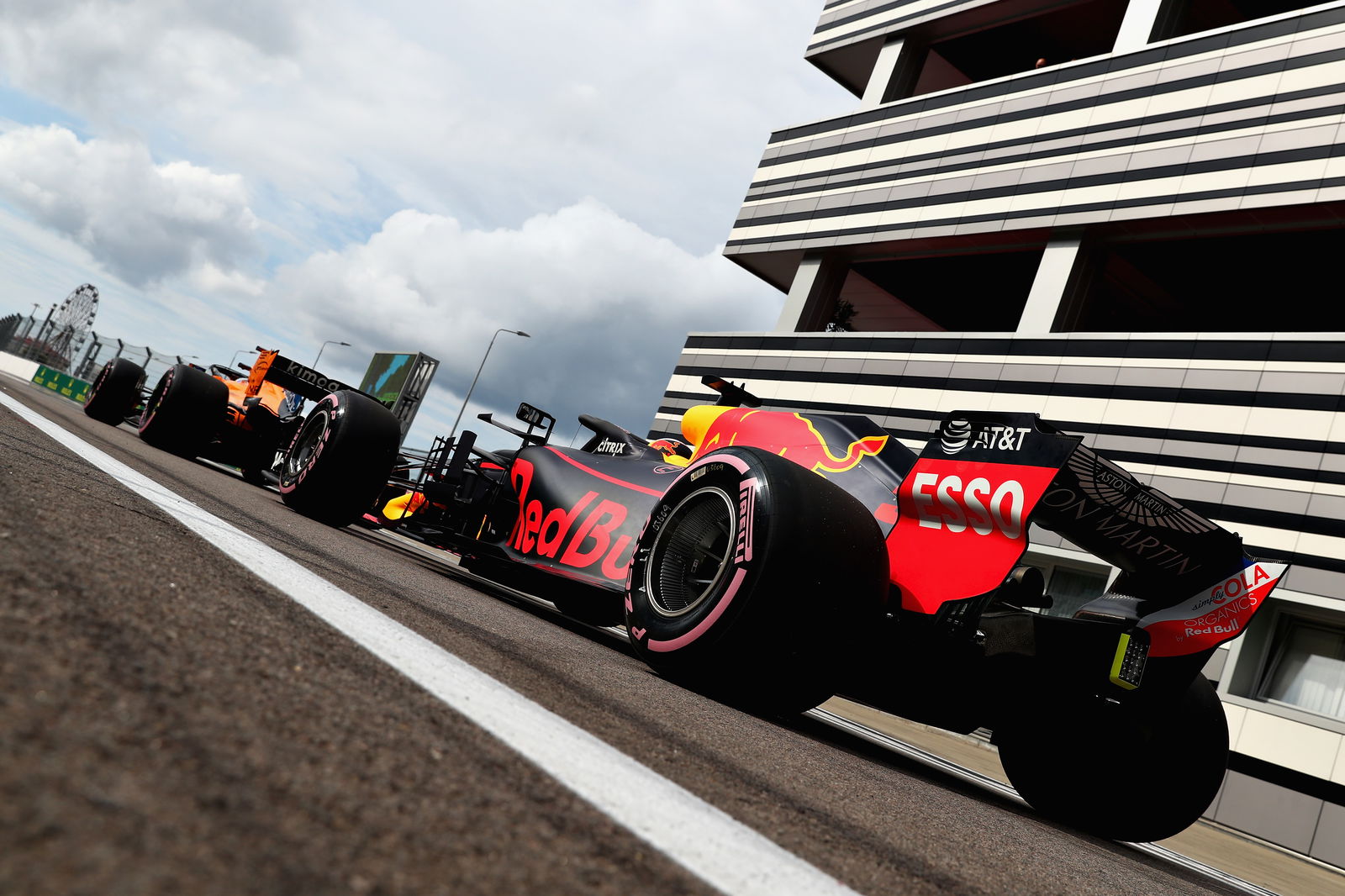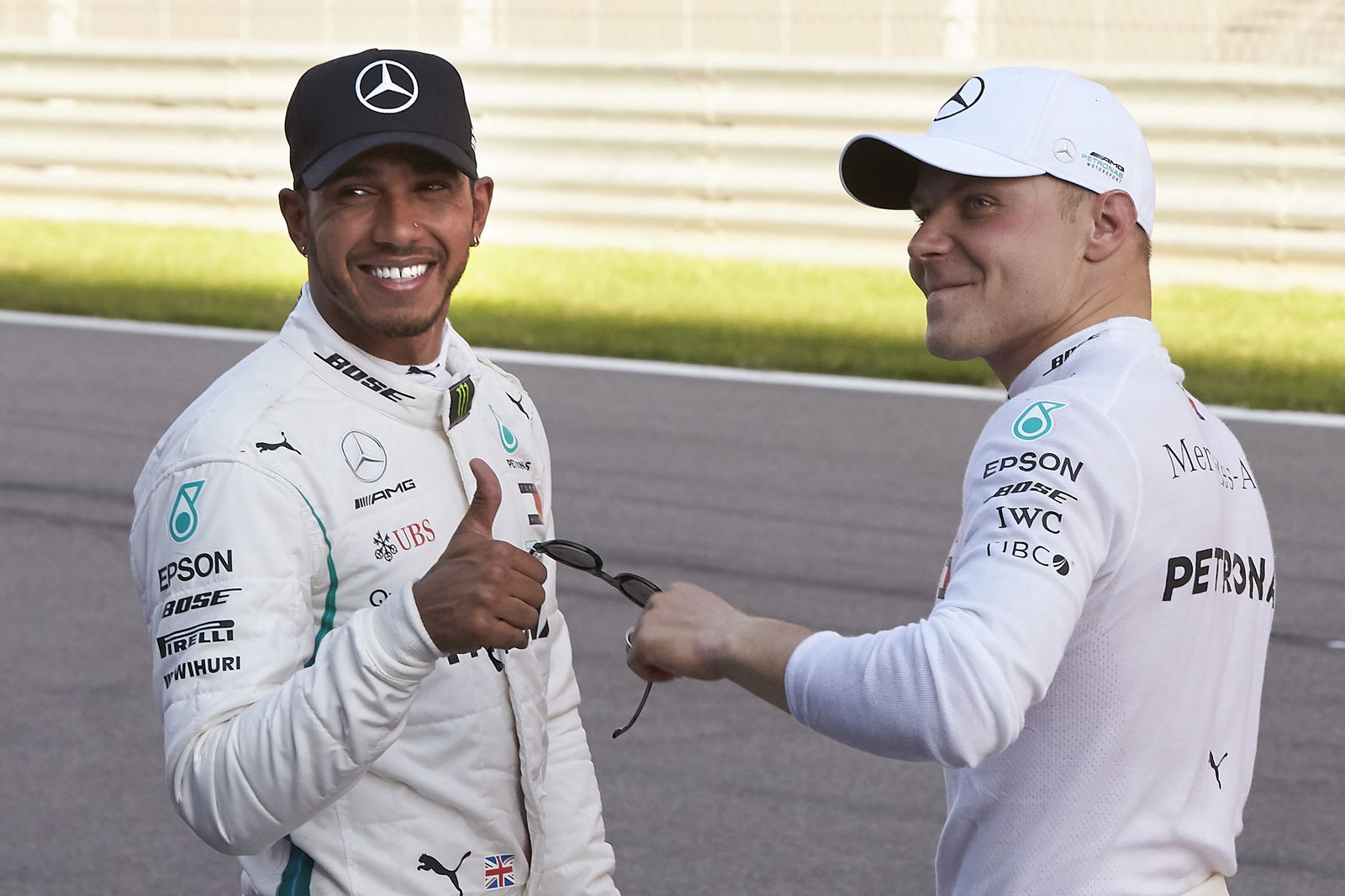Qualifying Analysis: How F1 ended up with the Sochi Q2 farce
Saturday’s qualifying session for the Russian Grand Prix is unlikely to be remembered as one of the high points of the 2018 Formula 1 season.
While there was something of a surprise result as Valtteri Bottas pipped the hitherto-dominant Lewis Hamilton to pole in Q3, the session was devoid of any proper drama or shocks.
It was always expected to be a quieter session than usual given the litany of grid penalties affecting one-quarter of the grid following power unit changes earlier in the weekend.

Saturday’s qualifying session for the Russian Grand Prix is unlikely to be remembered as one of the high points of the 2018 Formula 1 season.
While there was something of a surprise result as Valtteri Bottas pipped the hitherto-dominant Lewis Hamilton to pole in Q3, the session was devoid of any proper drama or shocks.
It was always expected to be a quieter session than usual given the litany of grid penalties affecting one-quarter of the grid following power unit changes earlier in the weekend.
But it resulted in a situation where five cars didn’t even bother to set a time in Q2, meaning anyone who bothered to go out on-track automatically advanced to Q3. It’s was effectively a participation award, something your neighbourhood internet snowflake-basher would be enraged by.
Q2 in Sochi was a mockery, but it was one that came about due to two factors: the nature of the F1 engine penalty rules; and the Hypersoft strategy disadvantage seen in Singapore.
The F1 engine penalty rules have been clear for some time now. There is a season limit for components, which if you go beyond results in a penalty. While Ferrari and Mercedes-powered teams have done well to, for the most part, stay within the season allocation this year, those using Honda and Renault power units have struggled.
When the new power units were introduced in 2014, new rules came into play regarding the number of components and resulting penalties, with weightings being applied depending on how many times a certain component had been used. While it was a fair system, it became complicated for fans, particularly when drivers would be racking up mammoth grid penalties with big figures.
For 2018, this was changed so any driver earning a penalty of more than 15 places would simply start from the back of the grid. It made it more straightforward for fans, but contributed to the confusion we saw in Q2 on Saturday.
With Daniel Ricciardo, Max Verstappen, Fernando Alonso, Pierre Gasly and Brendon Hartley all starting at ‘the back of the grid’, their starting order was set to be determined by the order in which their cars got out in FP1 (or when the cars officially used the new component). This resulted in the long queue we saw at the end of the pit lane with about 10 minutes before the green flag in FP1 on Friday.

This removes any real incentive for the drivers to take much part in qualifying, particularly at a track where tyres are limited. It is why we saw Ricciardo, Verstappen and Gasly only get through Q1 before not bothering to complete a lap in Q2, for it would have no bearing on their starting spots. Had Alonso or Hartley made it through, they would have done the same thing.
Under the old system where the grid penalty was tallied up - sometimes hitting 55 or 60 places - there would have been an incentive to qualify ahead of your rivals and at least try. Now they are simply sent to the ‘back of the grid’ - and all have the same starting position - that has been taken away.
Alas, with 12 cars fighting for the 10 Q3 positions, there would still have been some kind of fight to go through in Sochi - had it not been for the Hypersoft tyre disadvantage we saw in Singapore. Of the midfield drivers, only one - Nico Hulkenberg - who started in the top 10 on Hypersofts would go on to score points, as those who did not make Q3 (and thus received a free choice of starting compound) ran a more optimal strategy, starting on Ultrasofts.
Drivers said earlier in the weekend how they thought the same disadvantage could play out in Sochi, with Kevin Magnussen saying on Saturday after qualifying he expected a “tricky” stint in the race on the Hypersofts following his long run in FP2.
This is where Renault cottoned on quickly. With the slowest cars in Q2 set to start 11th and 12th, thus getting the free choice of starting tyre, the team opted not to bother sending either Carlos Sainz Jr. or Nico Hulkenberg out. While the other midfield runners all completed Hypersoft runs to advance to Q3, Renault just sat back, preferring the tyre advantage offered.
Again, this is a problem that would not have come about had F1 not made a change to the regulations a few years ago. It used to be that the tyre used for Q3 would be the starting tyre, not Q2, only for this rule to be changed as many midfield teams were getting into the top 10 and then not running in the final session. While the rule has worked for the most part, here, it meant the entire Q2 session was of very little consequence.
For the most part, though, the tyre delta between the two softest compounds has not caused issues as it did in Singapore and is feared to in Sochi. The onus will be on Pirelli to work on this area for 2019, or consider alternatives in its tyre selections to close off this loophole.
The engine penalty conundrum is a harder one to crack, though. Following qualifying, Gasly spoke of his disappointment over the nature of the rules as it had effectively written off his Saturday in Russia.
“They need to find a solution to give different penalties, because if you look at Q2, all five cars from P11 to P15 didn’t run. I think that looks really silly,” Gasly said.
“The regulations at the moment doesn’t push the team to run the car in qualifying. If the grid position was based on the qualifying result, then at least for us, it would have been out in Q2 and trying to set a better lap time than Alonso and the Red Bulls would have needed to go out as well. At least you see cars.
“Already knowing after FP1 I know my grid position, it’s not so great. I think for sure the penalty system which is a bit stupid because when you qualifying in a position, you like to start in that position and not at the back. Plus after the way they decide the penalty and your grid position for me, it’s not right. They should find another way.”

Red Bull team boss Christian Horner agreed, having seen his cars get sent to the back of the grid as well.
“I think you’ve got the situation if all those cars went through Q1 into Q2, and then don’t run in Q2, it’s a bizarre situation,” Horner said.
“I think it’s unfair on the drivers. Fair enough to penalise the team, but I think for the driver it makes tomorrow a bit of a waste of time. I think it would be more balanced, whether it’s constructors points or something like that, the team pays a penalty rather than the driver.”
Penalising the team may be more fair, but it is hard to see a way of doing so that would not come without massive drawbacks and only create more problems. While a financial hit would dissuade smaller outfits from going over the season engine limit, the bigger teams and manufacturers would see it as a drop in the ocean, resulting in cost spiralling again.
“We don’t want to have any engine penalties because they are distorting,” said Mercedes team boss Toto Wolff.
“But on the other side you cannot have free engines for everybody, because we would be probably going back to the days of a qualifying engine and a race engine, and then costs would get completely out of control.”
A constructors’ championship points hit would definitely be a deterrent to teams, yet if you are Red Bull - comfortable third and with little hope of catching the leading two teams - you could freely change engines and rack up a huge points deficit, knowing you won’t lose them.
Perhaps even more daunting is the idea of a well-funded yet unreliable and underperforming team - e.g. McLaren in 2015 - ending the season with a negative points total because they had taken so many power unit deductions.
The Sochi Q2 farce may not have been a good advert for F1, but it was a perfect storm. We’ve never seen a session like it, and hopefully we won’t again.
But it is all food for thought on how F1 can tweak its rules moving forward. While changes may attempt to simplify things, it can also remove some incentives for competition - which is the surely the bigger concern for F1’s fans.

